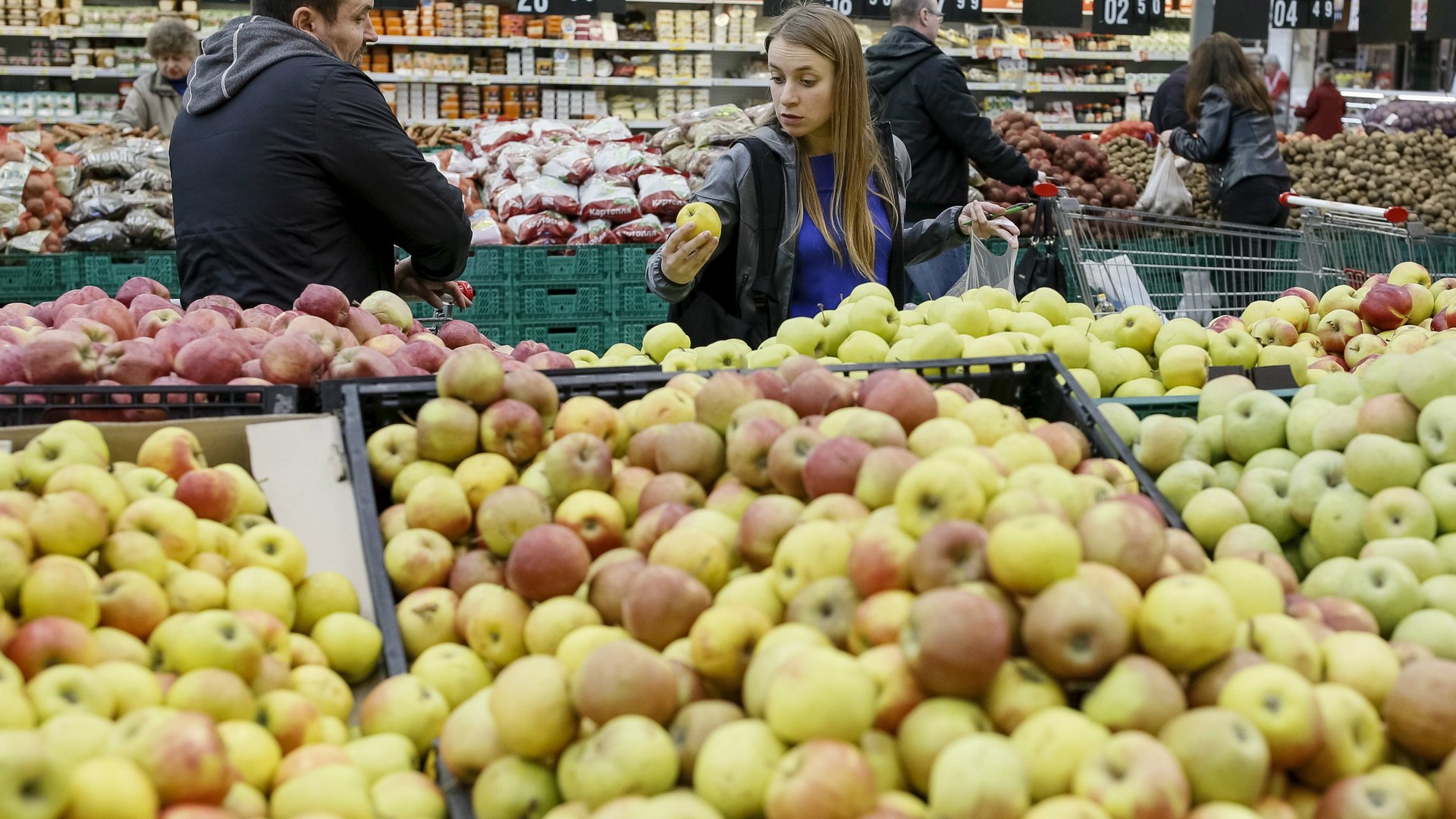Scientists are playing with apple flour to pack cookies with fiber
In their march to reformulate products to appeal to health-conscious consumers, giant food manufacturers such as Nestlé, Danone, and General Mills have been tinkering with their recipes. They’re swapping out artificial flavors and loading up products with vitamins. Cookies are being packed with protein, Lucky Charms are changing colors, and frozen pizza is getting a boost, too.


In their march to reformulate products to appeal to health-conscious consumers, giant food manufacturers such as Nestlé, Danone, and General Mills have been tinkering with their recipes. They’re swapping out artificial flavors and loading up products with vitamins. Cookies are being packed with protein, Lucky Charms are changing colors, and frozen pizza is getting a boost, too.
Some of the swaps you’d recognize: Food producers might use rice flour as a substitute for wheat flour for people paying attention to gluten, or bran for people seeking fiber. But others are investigating less conventional ingredients—like, for example, apple pomace flour.
Pomace is the byproduct of juicing. After apples have been squeezed and crushed for their juice, the leftover bits (about 54% pulp, 34% peels, 7% seeds, 4% seed cores, and 2% stems) are often tossed—either thrown out to biodegrade or used as livestock feed. Sometimes it’s used to make simple food products such as jam.
But it can also, surprisingly, be used as flour. Fresh apple pomace contains a lot of water, so the flour-making process starts with dehydration: draining the pomace on a slanted surface, smashing it into a thin layer, and drying it with hot air or the sun. After that two to three-day process, the pomace is packed into airtight bags. Later, it can be milled into flour—and while there’s still a lot of perfecting to be done, that flour could have nutritional upsides if used at industrial scale.
“Due to the increasing incidence of various metabolic disorders, obesity, and gluten intolerance, there is an interest in developing fortified products with a high content of dietary fiber and antioxidants,” according to University of Belgrade researchers behind a new study published this month (Nov. 8) in the journal Foods.
As part of their work, the researchers studied the impact of apple pomace flour on cookies, experimenting with ratios of wheat flour to pomace flour in industrial settings in an attempt to strike a good balance. Their work was supported by companies that stand to benefit from the knowledge, including juice producer Fruvita, the cookie company Gold Kusadak, and Sunny Delight.
Apple pomace flour is a long way from being adopted more broadly by food makers. One reason why: On a chemical level, apple pomace flour simply holds more water than wheat flour. To create a good dough consistency, bakers add water to flour. But the porous structures developed within the apple product’s cell walls during the dehydration process allows for easy and complete rehydration. Basically, a baker may have to use more water than is typical to create a workable dough because apple flour can absorb so much more than wheat.
What the researchers found, after conducting controlled taste tests, was that an industrial-scale recipe could be substituted with up to 50% apple pomace flour and still create a texture and taste that’s acceptable to consumers.
For the apple industry, that could create a new business opportunity. If companies can use the byproduct of juicing to create something new from a substance they might typically throw away, there’s more money to be made and less waste. Plus, incorporating apple pomace flour has been shown to extend a product’s shelf life.
And for consumers, baked goods that substitute some wheat flour for apple pomace flour may have nutritional benefits. Of course, it’s good to be leery of health food fads, and there’s still a lot to learn about products with apple flour incorporated. Still, more nutritional processed and shelf-stable foods are possible to engineer—and they can help confront food instability.